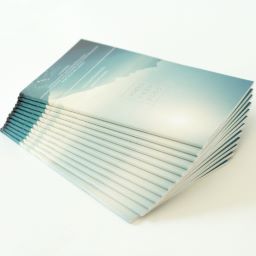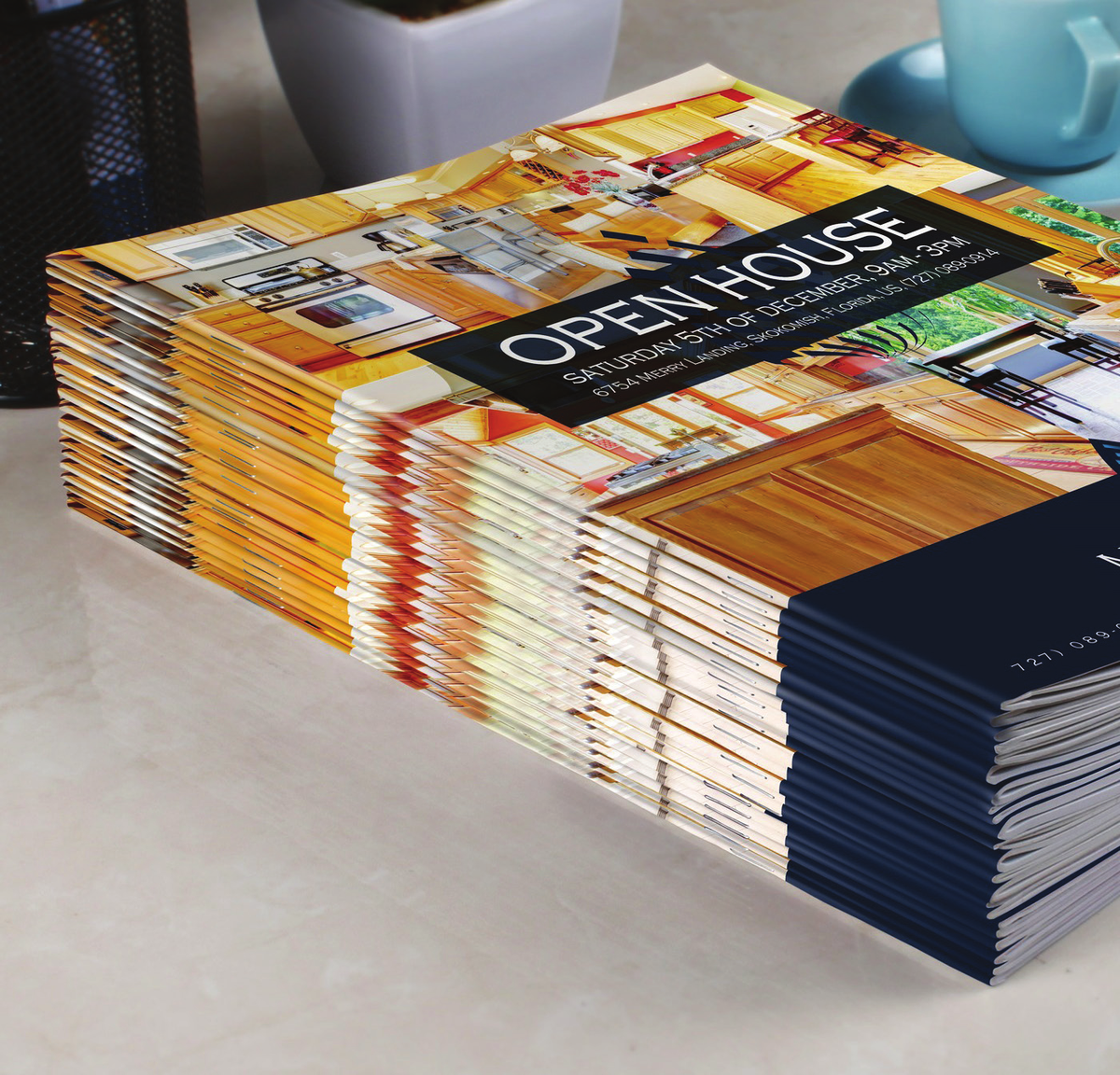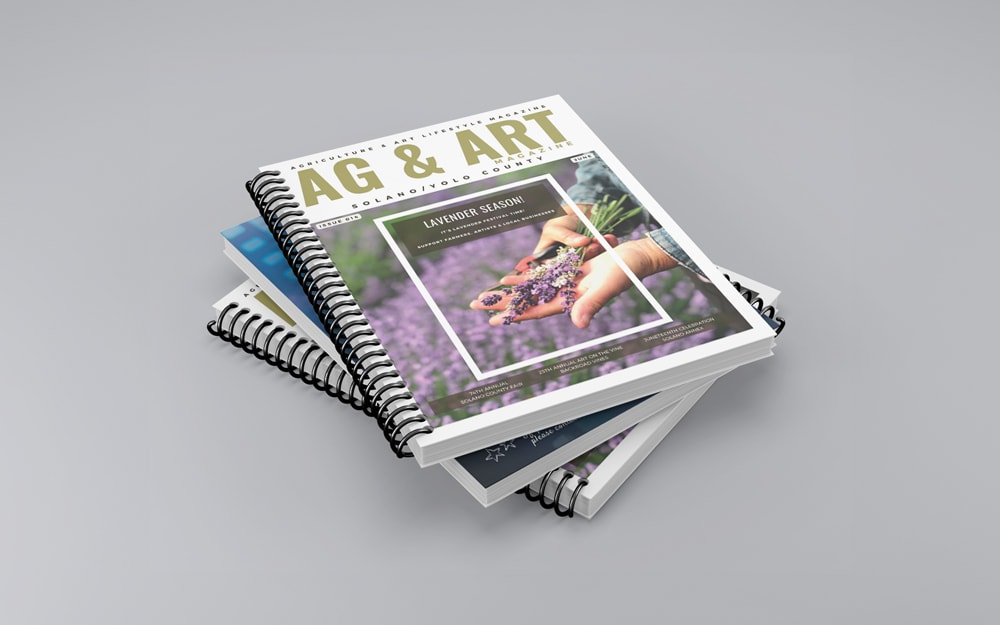Unlock the Power of Augmented Reality in Your Booklet Printing Projects
Unlock the Power of Augmented Reality in Your Booklet Printing Projects
Blog Article
The Essential Overview to Recognizing Booklet Printing Options and Techniques
The procedure of booklet printing involves numerous factors to consider that can greatly impact the end product. From picking the ideal layout and size to understanding the subtleties of binding techniques, each choice plays a crucial duty. Furthermore, elements such as paper stock and printing strategies additional influence the effectiveness of the pamphlet. As one navigates these options, it comes to be vital to realize just how they interconnect and what that means for the general end result.
Recognizing Brochure Formats and Dimensions
When thinking about brochure printing, understanding the numerous formats and dimensions offered is vital for achieving the preferred presentation. Brochures can be generated in many styles, consisting of saddle-stitched, spiral-bound, and perfect-bound, each offering distinct benefits. Usual sizes range from standard letter (8.5 x 11 inches) to smaller sized alternatives like A5 (5.8 x 8.3 inches), enabling for versatility based on web content and target audience.Selecting the proper size can influence both the format and visitor interaction. Bigger sizes could fit aesthetically driven web content, while smaller styles might be extra mobile and easy to use. In addition, the number of pages influences the choice of binding technique, as thicker pamphlets might need sturdier bindings. Eventually, recognizing these facets permits a much more tailored method, making certain that the end product aligns with the desired message and aesthetic, improving the general performance of the interaction.
Picking the Right Paper Stock

Binding Approaches: Options and Factors To Consider
When it comes to binding approaches for booklets, a number of choices are readily available, each with distinct advantages. Saddle stitch binding supplies an affordable option for thinner pamphlets, while excellent binding techniques offer an even more sleek search for thicker publications. Wire-O binding stands apart for its longevity and simplicity of usage, making it perfect for papers that need adaptability.
Saddle Stitch Binding
Saddle stitch binding offers a practical and cost-efficient solution for putting together booklets, making it a prominent option among publishers and companies. This binding technique includes folding sheets of paper in half and stapling them along the fold line, producing a neat and organized look. Normally appropriate for brochures with a lower web page count, saddle stitching is optimal for magazines, brochures, and instructional materials. The simplicity of this method permits quick production and is typically favored for marketing products or brief runs. It is essential to keep in mind that saddle stitch binding may not be suitable for thicker booklets, as the back might not hold up under enhanced weight. Overall, it continues to be a trusted alternative for numerous printing tasks.
Perfect Binding Methods
Perfect binding is a widely used strategy that offers a professional and refined coating to booklets and magazines. This method entails gluing the pages together at the spine making use of a strong adhesive, permitting for a tidy edge and the ability to hold a larger variety of pages compared to saddle sewing. Perfect binding is particularly ideal for thicker booklets, such as directories and annual records, where a durable, level spine is preferred. Additionally, it uses the choice for a published cover that can be developed to boost visual allure. Factors to consider such as web page matter, paper weight, and the planned usage of the booklet ought to be taken into account, as they can impact longevity and overall high quality.
Wire-O Binding Choices
Wire-O binding, recognized for its sturdiness and adaptability, offers an outstanding choice for brochures that need easy page turning and an expert appearance. This binding technique utilizes a collection of metal loops that hold pages safely, enabling them to lie flat when open. It is especially appropriate for brochures, presentations, and manuals as a result of its durable nature. Wire-O binding is offered in different colors and sizes, suiting different page matters and densities. Furthermore, it permits the incorporation of covers and tabs, enhancing the booklet's total visual. Considerations for Wire-O binding include the option of cable color, the dimension of the loopholes, and the degree of customization preferred, all of which can profoundly affect the last product's appearance and functionality.
Digital vs. Offset Printing: Which Is Best for You?
When choosing a printing approach for brochures, comprehending the differences in between electronic and balance out printing is crucial. Digital printing uses modern-day innovation to produce high-quality prints promptly and economically, making it perfect for short runs or projects calling for quick turn-around times. It allows for modification, giving the capacity to print on-demand with marginal waste.In contrast, counter printing is a standard method that masters producing big amounts with constant top quality. It involves moving ink from a plate to a rubber covering, after that to the paper, which leads to vivid shades and precise information. However, offset printing generally calls for longer setup times and is a lot more cost-effective for larger volumes.Ultimately, the selection in between electronic and offset printing depends upon task requirements, budget plan, and desired amount. For little, time-sensitive jobs, electronic could be the ideal choice, while offset may click here to find out more be more effective for bigger, top quality productions.

Creating Your Brochure: Tips and Finest Practices
When developing a brochure, careful attention to format, typeface choice, and color usage can significantly enhance its effectiveness. A well-structured format overviews the reader's eye, while suitable fonts assure readability and share the preferred tone. Additionally, reliable use color can stimulate emotions and highlight key info, making the general design more impactful.
Selecting the Right Layout
How can one effectively select the appropriate design for a pamphlet? Initially, it is necessary to review the booklet's objective and target audience. A clean, arranged format improves readability and interaction. Using a grid system can assist in aligning aspects regularly, producing a specialist look. Additionally, integrating aesthetic hierarchy with varying dimensions and positionings of pictures and message can guide the visitor's eye and stress crucial details. It is likewise important to leave adequate white room, which protects against overcrowding and permits far better emphasis. Ultimately, testing different designs through mock-ups can give insight into exactly how the style carries out in real-world scenarios, making sure that the final item meets both aesthetic and practical requirements.
Picking Ideal Typefaces
An appropriate font can greatly boost the total design of a pamphlet, complementing the design and strengthening the material's message. The option of typefaces must consider readability, particularly for body text, as it assures the info is accessible to all visitors. Sans-serif font styles are usually preferred for digital styles, while serif fonts can provide a traditional feel in published materials. It's a good idea to restrict font choices to two or 3 to keep visual coherence. Additionally, font style size plays an essential role; headings must be distinctive but not overwhelming, while body text ought to fit for analysis. When selecting typefaces, positioning with the brochure's style and target market is vital for effective interaction and aesthetic charm.
Reliable Use of Shade
Color works as an effective tool in pamphlet design, forming assumptions and assisting this page visitor feelings. It can stimulate feelings of trust, exhilaration, or peace, depending upon the tones chosen. Developers ought to take into consideration color theory concepts, guaranteeing that the selected scheme straightens with the booklet's message and target market. Utilizing warm shades like red and orange can develop seriousness, while cooler tones like environment-friendly and blue foster tranquility.Additionally, contrast plays a vital role; corresponding shades can boost readability and aesthetic appeal. Consistency in shade usage throughout pages further reinforces brand identification and communication. Inevitably, efficient color application not just catches attention however likewise strengthens the pamphlet's objective, making it a necessary element of successful style.
Completing Touches: Coatings and Special Effects
While several consider the content and format of a brochure the most crucial components, the finishing touches, such as coverings and unique impacts, play an essential function in improving its overall charm. Coatings can give protection and sturdiness, making certain that the booklet endures deterioration. Matte coatings provide a sophisticated, non-reflective surface, while glossy finishes can make shades show up more attractive and lively. Special effects, like embossing or aluminum foil stamping, include a responsive measurement that can develop a remarkable impact. These strategies can highlight particular areas, drawing focus to essential information or creating aesthetic rate of interest. Additionally, UV finishing can provide a high-shine coating that elevates the overall look.Together, these completing touches not only improve the booklet's aesthetic however additionally communicate professionalism and reliability and attention to information, eventually leaving a lasting effect on the visitor.
Cost Considerations for Brochure Printing
Understanding the different price factors to consider for pamphlet printing is important for organizations and services intending to enhance their spending plans. Trick variables affecting costs include the choice of binding, ink, and paper approaches. Higher quality materials, such as superior paper or specialized inks, typically enhance the general expenditure. Furthermore, the size and page count of the pamphlet play a considerable function; bigger brochures require more resources and time to produce.Another essential consideration is the printing technique, whether digital or countered, as each has its own pricing structure and suitability for different amounts. Services must additionally factor in style costs, which can vary based on complexity and making use of specialist solutions. Ultimately, shipping and handling charges can contribute to the overall, specifically for huge orders. By reviewing these elements, companies can make enlightened decisions that line up with their financial capacities while accomplishing the wanted quality in their printed materials.
Frequently Asked Concerns
What Are the Environmental Effects of Pamphlet Printing?
The environmental influences of brochure printing consist of deforestation from paper production, carbon emissions from transport, and waste generation from thrown out materials - Booklet Printing. Sustainable methods, such as using recycled paper and green inks, can reduce these impacts
Just How Can I Make Certain Shade Precision in My Pamphlet?
To ensure shade accuracy in a brochure, one need to utilize adjusted displays, employ expert color profiles, conduct test prints, and pick top quality printing services that provide color matching and proofing options for best outcomes.
What Is the Regular Turnaround Time for Booklet Printing?
The regular turn-around time for brochure printing varies relying on the complexity and amount - Booklet Printing. Generally, it varies from a few days to two weeks, influenced by variables such as printing approaches and completing requirements
Are There Minimum Order Quantities for Pamphlet Printing?

Can I Publish Booklets in Several Languages?
Printing pamphlets in numerous languages is feasible. Lots of printing services supply choices for bilingual or multilingual formats, permitting effective communication. Careful planning warranties that make components suit different languages without endangering readability or visual appeals. Additionally, aspects such as paper supply and printing strategies Web Site additional affect the performance of the brochure. When taking into consideration pamphlet printing, comprehending the different layouts and dimensions readily available is essential for achieving the desired presentation. When picking a printing approach for pamphlets, understanding the differences between digital and offset printing is necessary. Additionally, the size and page matter of the pamphlet play a considerable duty; larger pamphlets need more sources and time to produce.Another important consideration is the printing technique, whether electronic or balanced out, as each has its own rates structure and viability for various quantities. The environmental impacts of booklet printing consist of deforestation from paper production, carbon discharges from transport, and waste generation from thrown out products.
Report this page